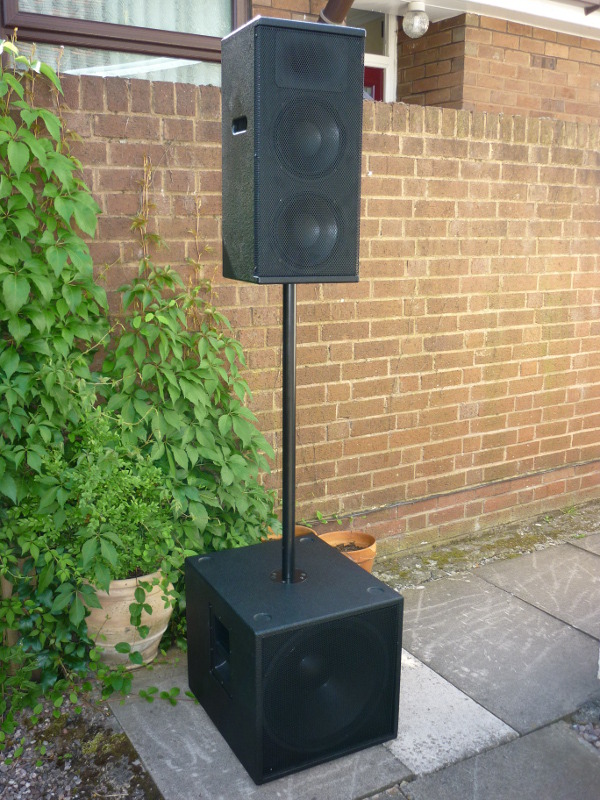- Posts: 410
- Thank you received: 2
Unity Horns /Why they work / Potential Patent Challenges /
- mykey-
-

- Offline
- Platinum Member
-

wasn't talking about compression
"if we all suddenly went blind does that mean light ceases to exist? I think its the same with ears, we have them to hear the noise, if noise did not exist no need for the ears."
would be great if our ears automatically fell off when we were around women
Please Log in or Create an account to join the conversation.
- Tony Wilkes
-

- Offline
- Elite Member
-

- Posts: 273
- Thank you received: 3
mykey- wrote:
would be great if our ears automatically fell off when we were around women
Mykey believe it or not I have actually found one or two in my life that it has been an absolute pleasure to converse with and the wife remains one of them ( honestly she does not read this Forum). But when I go out and listen to the drivel spouted by some of my mates GF&W jeez.
Tony
Please Log in or Create an account to join the conversation.
- Tony Wilkes
-

- Offline
- Elite Member
-

- Posts: 273
- Thank you received: 3
Tony.A.S.S. wrote: Tony, the point I make, is that when a hammer hits a piece of steel, the clang we hear is an interpretation of the vibrations through the air. It's only when it hits our ear drums that our brain translates the vibrations. Maybe, it's the same situation with radio and tv waves. There has got to be 1000's of watts being transported through the air from masts all over the country and we don't hear any of it until the appropriate receiver gets hold of it.
Tony, I suppose if radio waves had been around from year dot as a means of communication then we probably would have evolved with some sort of HF antenna on our body (I wondered what that sticky-out thing was for).
We pretty much cover the range of the spectrum with the receivers that we have eyes and ears.
Its part of the old question "when a tree falls in a forest with no one around does it make a noise?
AJ
Please Log in or Create an account to join the conversation.
- kevinmcdonough
-

- Offline
- New Member
-

- Posts: 11
- Thank you received: 0
It is indeed a very interesting philosophical discussion. For years when i was younger, I had heard the whole "does a tree make a sound" sound bite, but had never quite appreciated it's subtlety until just a couple of years ago. Is your definition of "sound" simply the pressure waves moving through the air, or is it the act of your ear/brain converting converting pressure waves into interpretable messages.
I would tend to lean towards the latter, and suggest that a tree, hammer or even speaker on its own simply creates pressure waves, and its only when we are there to hear them that "sound" is created smiley1 .
On the subject of sound travelling at different speeds through air, within the sphere of speaker design I would seriously question it and also be tempted to label it negligible. The Wikipedia post referenced by the OP discusses speed between air compositions with different molecular properties. However we deal with normal, earth atmosphere of (mostly) Nitrogen, oxygen and a splash of CO2. Also we mostly deal with relativity similar air pressures. (except for maybe Rog up in his secret speaker hide away in the tibet/china mountains!
However the biggest factor is none of these, it is the huge wavelengths of some low frequencies as someone mentioned. How do you judge when a wave has reached a particular point in space and when does your ear "hear" the wave? When the start of the wave reaches you? the middle of the wave? The peak of the wave, or the end of the wave? These will all have different answers depending on the wavelength and these (sometimes several metre) differences will have much more of an effect on the perceived speed than any tiny differences in the speed due to frequency.
On unity horns though, they are an interesting concept. I've always thought of them as basically offset horns. The comp is at the end of the horn just as it would be normally, the upper cone drivers are on a horn where they are slightly offset and the lower drivers are on a horn where they are quite a bit offset. Each piece could be designed separately but the skill and the challenge is choosing the right horn geometry/drivers/compression ratio so that they all work on the SAME horn design and give you the response you need, and can then be combined together.
k
Please Log in or Create an account to join the conversation.
- nickyburnell
-

- Offline
- Platinum Member
-

- Posts: 802
- Thank you received: 0
Obvious I would have thought. Bit like time really, if you don't need it (read non human) then it aint there.Tony.A.S.S. wrote: This is something you may not have considered, but how many of you, like me, believe that the world outside our heads is in complete silence? It's only our brains via our ear drums, (what's left of them) that translates what I would imagine to be, silent air waves.
Please Log in or Create an account to join the conversation.
- keith
-

- Offline
- New Member
-

- Posts: 12
- Thank you received: 0
Regarding the speed of sound vs. frequency, my first thought when reading earlier arguments was of thunder. When its point of origin is close to us, we hear one contiguous explosion of sound. The further from us the point of origin gets, the more we hear that initial HF "crackle" followed later be the LF rumble. I hadn't really considered it before reading this thread though. Anyone know if this IS the reason thunder sounds like this from long distances?
Whatever the reason, this is how we are used to hearing thunder and why it sounds "right" even as the sound we hear changes SO radically as we grow more distant from its source.
This segues to my opinion on this debate. *** PERCEPTION *** How are we used to perceiving sounds in nature? How can audio geeks, I mean gurus, help to recreate the same perceptions from the sounds we reproduce from our speakers? In other words, the job of a speaker designer or audio engineer or whatever, is to recreate the sound of the trumpet and the violin so that the listener perceives it in a recognizable and pleasant way. If the listener is used to hearing a violin create a contiguous sound that, by the time it reaches the listener's ears has phasing misalignment due to low frequency lag, then my job as an engineer is to create a contiguous violin sound from the speaker that can then experience the same LF lag, giving the listener the same perception.
Therefore, my understanding is that if two speaker drivers are not time aligned, the misalignment will induce "unnatural" phase anomalies, especial at and around the crossover frequency.
I know I made some broad generalities along with glossing over the fact that sometimes we WANT to manipulate the listener's perception, etc.
Bottom line- In the same way a story is "believed" when watching a good movie, a listener should "believe" they are listening to an instrument or voice when hearing good sound. And isn't THAT why we are all here at this web site? To figure out how to recreate sound in a way that leaves the listener hearing only the content of the music rather than the equipment producing it?
Thanks for the forum and the thread. Truely fascinating.
Adios, Keith
Please Log in or Create an account to join the conversation.